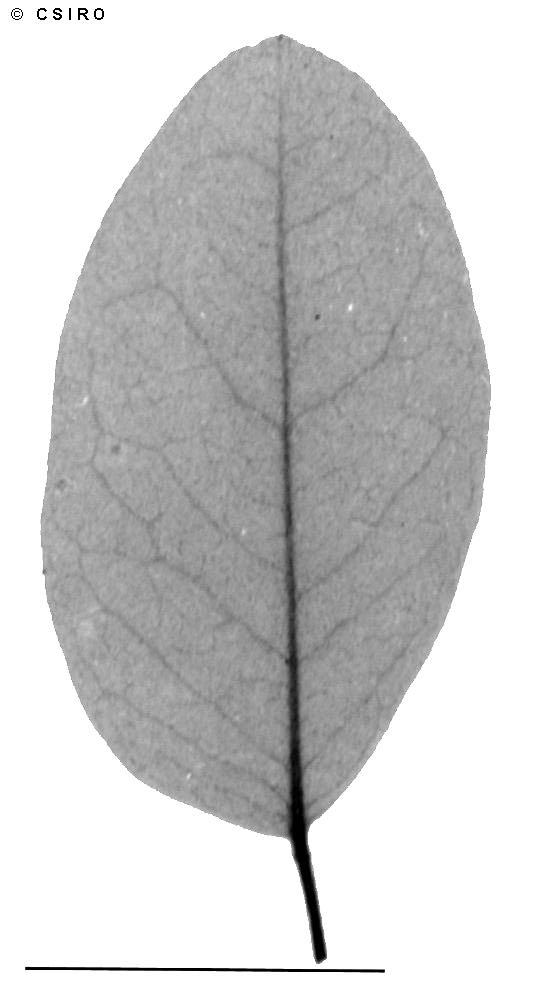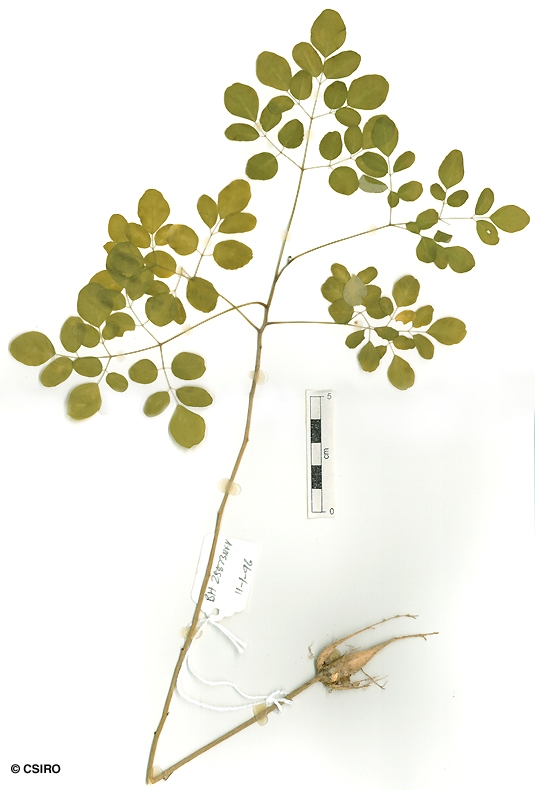Australian Tropical Rainforest Plants - Online edition
Moringa oleifera Lam.



Lamarck, J.B.A.P. de M. de (1785), Encyclopedie Methodique, Botanique 1(2): 398. Type: Ceylon, Hermann vol. 2: 24 (lectotype BM).
Koepanger Tree; Moringa; Horse-radish Tree
Grows into a small tree but also flowers and fruits as a shrub.
Compound leaves tripinnate or even four times pinnate. Leaflet blades elliptic to obovate, about 10-25 x 8-15 mm, base often oblique. Moribund leaves turn yellow. A single green gland usually visible on the upper surface of the primary rhachis at its junction with the secondary axis. Hemispherical glands present on the twig close to the point of attachment of the compound leaf petiole.
Fruits 3-sided, i.e. triangular in transverse section, about 15-45 cm long. Seeds 3-winged. Cotyledons fused, radicle straight.
First pair of true leaves bipinnate. At the tenth leaf stage: leaves bipinnate with about nine leaflets per leaf. Stalk of the terminal leaflet much longer than those of the lateral leaflets. Raised glands or gland-like structures at the junctions of the various compound leaf axes and also at the junction of the leaflet stalks and the compound leaf axes. Stipules about 0.5-1.25 mm long. Taproot swollen, carrot-like (Daucus carota). Seed germination time 9 to 39 days.
An introduced species originally from northern India, widely cultivated in Malesia, now naturalised in WA, CYP and NEQ. Cultivated in NT and possibly naturalised. Altitudinal range from near sea level to 400 m. Usually grows in open forest at old settlement sites, but occasionally found in monsoon forest or vine thickets. Also occurs in New Guinea.
Leaves are a diuretic and laxative. Austin, D. F. 1998. Poisonous Plants of Southern Florida. (http://www.fau.edu/divdept/science/envsci/poison- pl.html)
This species may have medicinal properties.
Moringa pterygosperma Gaertn. De Fructibus et Seminibus Plantarum 2: 314 (1791). Type: Cultivated Leiden Botanical garden; holo: L?.





